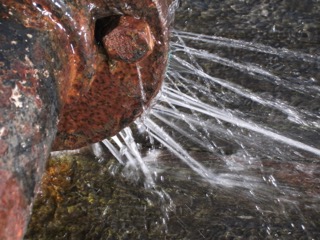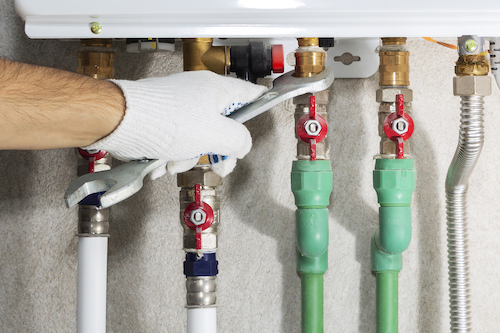Quick-Response Plumbing: Tips for Identifying as well as Fixing Ruptured Pipes
Quick-Response Plumbing: Tips for Identifying as well as Fixing Ruptured Pipes
Blog Article
What're your opinions about What to Know Before Installing a Dishwasher?

A burst pipe is a significant emergency; you can only stand as you enjoy water you pay a lot to reunite with the planet. In even worse cases, you see a swimming pool on your kitchen flooring, which is a fantastic journey hazard, specifically if you have youngsters around. If the pipeline that burst was in your walls, trouble: you may need to paint that entire area.
Just how can a disaster like a ruptured pipeline be prevented as well as managed? Well, by paying attention to your professional emergency plumbing technicians and adhering to these rules.
Just how do I recognize when my pipes have burst?
Changing water stress
Pipes do not simply burst in a day. You may have seen that your kitchen tap or shower does not run instantly when you transform the tap. It may stop briefly for a couple of seconds and after that blast you with even more force than usual.
In various other circumstances, the water may appear normal at first, then decrease in pressure after a couple of seconds.
Damp walls and also water stains
Prior to a pipe ruptureds, it will certainly leak, the majority of times. If this persistent dripping goes unnoticed, the leakage might graduate right into a wide tear in your pipe. One simple way to prevent this emergency is to watch out for wet walls advertisement water stains. These water spots will certainly lead you right to the leak.
Puddles under pipelines and sinks
When a pipe ruptureds, the outflow develops a pool. It may appear that the pool is growing in dimension, and despite how many times you mop the pool, in a couple of minutes, there's one more one waiting to be cleaned up. Typically, you might not be able to map the puddle to any type of visible pipes. This is an indicator to call a professional plumber.
Untraceable trickling noises
Pipeline ruptureds can happen in one of the most unpleasant locations, like within concrete, inside wall surfaces, or under sinks. When the house goes quiet, you might have the ability to listen to an irritatingly relentless dripping noise. Even after you have actually checked your shower head as well as cooking area tap, the leaking might continue.
Dear visitor, the dripping may be originating from a pipeline inside your wall surfaces. There isn't much you can do about that, other than inform an expert plumber.
Shut off the Water
When water freezes, it broadens in volume by regarding 9 percent. And also it expands with incredible pressure: The pressure inside pipes might go from 40 extra pounds per square inch to 40,000 psi! No pipeline can hold that much pressure, so it breaks open. The break might take place where the ice forms, but more frequently, it takes place where water stress finds a vulnerable point in the pipeline. That might be inches and even feet from the icy location. Find the water shutoff valve and turn off the water to avoid even more damages. You might also need to turn off the electrical energy too, depending on where the leakages occurs and how huge it is.
Polluted water
Lots of people think a ruptured pipeline is a one-way electrical outlet. Fairly the contrary. As water spurts of the hole or wound in your plumbing system, contaminants find their way in.
Your water may be infected from the resource, so if you can, examine if your water container has any kind of troubles. However, if your drinking water is provided and purified by the local government, you should call your plumber immediately if you see or scent anything funny in your water.
What do I do when I find a burst pipe?
Your water meter will remain to run also while your water wastes. To decrease your losses, find the main controls and transform the supply off. The water pipe are an above-ground structure beside your property.
How to Fix & Detect a Leaking Pipe
How Do I Know if a Pipe is Leaking?
Leak detection tests can help you determine if your pipe has a leak. Even if you don’t see an apparent leak, you should still conduct leak detection tests regularly to save water and money—and prevent major damage to your home.
Water meter. It can be helpful to figure out what your usual water meter usage numbers are and then monitor them regularly. To monitor your meter, first, turn off all water faucets in your home. Check the meter and write down the numbers. In a few hours, check the meter again. If the numbers have changed, you have a leak. Water gauge. Use a water gauge to test your water pressure. Your showerhead should produce a certain amount of water pressure based on its model and design. If the pressure is lower than it is supposed to be for that specific showerhead, your home likely has a leak. Puddles. Look inside your bathroom, laundry, and kitchen sink cabinets. Puddles around the cabinets or around toilets, tubs, showers, and washing machines indicate the presence of a leaking pipe. You may also notice loose tiles, peeling or flaking paint, or mold caused by water accumulation. Napkin test. Even if you don’t see any puddles, you may still have a leak. You can test for water leaks in the bathroom, laundry, and kitchen by wiping below-sink connections with a napkin, paper towel, or piece of toilet paper. If it becomes damp, you probably have a leaking pipe under the sink. Discolored walls. Walls that are discolored—usually with brown or yellow stains—or bulging might mean that they have been impacted by water damage caused by a leaking pipe. Smell. A leaky pipe will create sitting water, and over time, that water may develop a musty smell. If your home smells musty, but you can’t locate the source, it may be due to a leak. Steps for Fixing a Leaking Pipe
A leaky drain can be remedied by tightening the pipe base, replacing the drain seal, caulking the rim, and tightening the pipe nut. Similarly, a leaking toilet pipe can be treated by tightening the packing nut. You may also need to replace the valve. A leaky faucet may just need tightening or replacement of the washers. If that doesn’t work, consider replacing your faucet. If your pipe has a hole in it, you may want to use a pipe leak sealer or pipe leak tape. This quick fix for water pipe leaks can also temporarily fix a copper pipe leak. https://www.ahs.com/home-matters/quick-tips/how-to-tell-if-pipes-are-leaking/

As a serious person who reads on How to Install and Connect a New Dishwasher, I thought sharing that portion was really useful. Are you aware of anybody else who is in to What to Know Before Installing a Dishwasher? Feel free to promote it. Thanks a lot for your time spent reading it.
Book
Report this page